A few weeks ago, I reported on a presentation that Trek Bicycles President John Burke gave at the National Bike Summit.
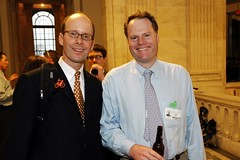
and tireless bicycle advocate Jay Graves.
File photo from National Bike Summit, 3/15/07
It was a preview of a presentation he gave just a few days ago at the Taipei Cycle Show. Borrowing in style and tone from Al Gore in his heralded Inconvenient Truth slideshow, Burke waves a warning flag to America’s bicycle industry.
He says that global trends in obesity, urbanization, pollution, and congestion pose major challenges that can be solved by the industry if more action and resources are directed to bicycle advocacy instead of product development and marketing.
To illustrate examples of places where advocacy has succeeded, Burke mentions Portland:
“The industry’s greatest opportunity is to create a bicycle-friendly world… and to me, the best thing about that is that we don’t have to re-invent the wheel. A bicycle-friendly world already exists in a number of places. It already exists in the Netherlands, Boulder, London, and it exists in Portland Oregon.”
Burke sent me a copy of his presentation (download the PDF). One of the slides demonstrates the immense growth in size of the bicycle industry if bicycle trips in America went from their current level of less than 1% to just 5% of all trips.

The graphic below shows the glaring disparity between marketing/R&D and advocacy budgets in the bike industry:

According to Burke, there are four key steps all members of the bike industry should take:
-
1) Get involved with government leaders.
2) Get involved with advocates.
3) Take responsibility for your major/home markets.
4) Re-direct resources away from traditional spending to advocacy.
Burke’s talk — in which he admits even Trek could do more — has re-ignited a very important conversation in the bicycle industry. Many insiders have long criticized the industry for being too wrapped up in itself, focusing on the latest carbon widget or lightweight part instead of making sure there were safe and accessible places to use them.
One industry veteran (who wants to remain anonymous) put it to me this way,
“We don’t need improved graphics, new carbon link arms, and more forgettable ads in Outside magazine. Just look in the garages of the people in your neighborhood. A new gadget won’t help them if they don’t know how to get from home to work safely, or if they lack a shower and locker facility at work. A product specific approach will not get more people on bikes. Advocacy groups don’t need a tag line, they need dough and the support of corporate leadership. I don’t want to be sour grapes, but I disagree with the immediacy of return and brand specificity of the industry’s marketing approaches as of late.”
The ball is in the industry’s court. They cannot just sit back and count their money, while understaffed and underfunded advocates and advocacy groups struggle to do the heavy lifting that sells their products.
===============
Further info
- British cycling journalist juggernaut (and editor of BikeBiz) Carlton Reid was in Taipei and put together a video of Burke making this presentation.
- You can also download the slideshow in PDF format (2.0MB) or watch it on YouTube (thanks again to Carlton Reid).
- Read an article about Burke in Taipei from BikeBiz.


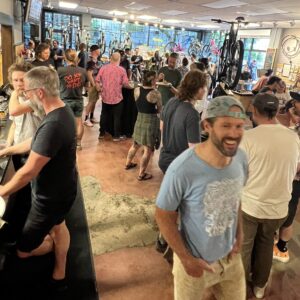
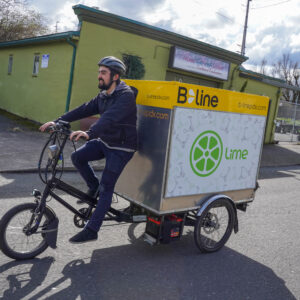
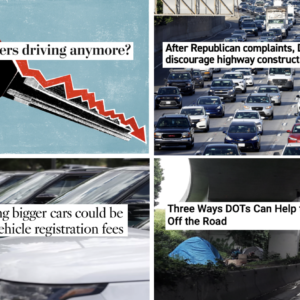
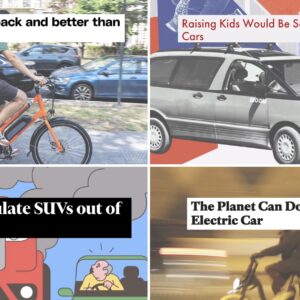
Thanks for reading.
BikePortland has served this community with independent community journalism since 2005. We rely on subscriptions from readers like you to survive. Your financial support is vital in keeping this valuable resource alive and well.
Please subscribe today to strengthen and expand our work.
“They cannot just sit back and count their money, while understaffed and underfunded advocates and advocacy groups struggle to do the heavy lifting that sells their products.”
That couldn’t have been put better. Br-freakin’-vo. Nice article.
It really does not need to be sold as a charitable contribution to advocacy to make a difference. All the industry has to do is shift the marketing focus.
The bike industry should take a page from the auto industry’s marketing handbook. Car ads always promote how cool it is to drive a car.
Current bicycle marketing focuses on what the industry wants to sell, which is racing bikes. Mr. Burke will need to put Trek’s money where his mouth is, before I believe that Trek wants to sell commuter bikes.
PS:”Be a hero; drive less.”
P.S.S.
“Make More Bikes In The US!”
Great article! I met John Burke at the Summit. He’s a great guy. I have even more respect for him now. Thanks for spreading the word!
Sounds like Joe Breeze was a couple years ahead of his time. I talked with him years ago at Interbike for the Breezer commuter bike launch, and John Burke’s presentation sounded like his off the cuff talk with me. I wonder if John Burke met him as well? It is great that things are heading this direction for the bicycle industry. Now if all US cities could be more like Portland and the surrounding areas, it would actually be possible for even more people to make trips by bike. There are still places that have a lot of work to do to get people on bikes, but with the help of the big bike company’s and advocacy groups it is really possible IMHO.
“We don’t need improved graphics, new carbon link arms, and more forgettable ads in Outside magazine”
I couldn’t agree more. IMHO, for all practical purposes, day-to-day bicycles have reached a state of near-perfection.
If the bicycle companies were to all call off research and development for the next five years, and spend all of that budget on advocacy for and actual construction of better bicycling facilities and conditions in this country, I don’t think anybody would complain. (Not like that’s going to actually happen, I’m just sayin’….)
Coyote has the right attitude re: making bikes cool. Not just cool to race, but cool to *ride*.
About 5 years ago, the Gap ran some TV ads featuring several young celebrities (wearing Gap, natch) cruising down a San Francisco street on three-speeds, to a peppy song by the Shins or some similar group. It was stylish, catchy and really FUN. (see http://www.fedge.net/~zdeschanel/photos/gapcommercialgallery.html for pictures; on youtube: http://www.youtube.com/watch?v=le6QrkyvHaU)
I remember thinking that one ad did more to sell bicycle riding than any gear centerfold I’d ever seen in BICYCLING magazine. I thought: if the top five bicycle manufacturers would band together and spend 10% of their marketing on a non-brand “bikes are fun” campaign (with celebrities, hip music, and effective ad buys) they would see their market explode. This isn’t even advocacy, it’s just GOOD MARKETING.
Jonathan;
I like your last line the best. The bike industry makes a profit (large or small) based on our advocacy work. My local bike shop made a nice profit because I got a friend to start biking. They need to do more advocacy
“We don’t need improved graphics, new carbon link arms, and more forgettable ads in Outside magazine. Just look in the garages of the people in your neighborhood. A new gadget won’t help them if they don’t know how to get from home to work safely, or if they lack a shower and locker facility at work. A product specific approach will not get more people on bikes. Advocacy groups don’t need a tag line, they need dough and the support of corporate leadership. I don’t want to be sour grapes, but I disagree with the immediacy of return and brand specificity of the industry’s marketing approaches as of late.”
YESSS! This is the whole issue summed up perfectly! Most people already have a bike gathering dust in the garage because they are too afraid to ride anywhere but the MUT (Multi Use Trail). With a bit better advocacy, some less intimidating streets or better maps on how to find them and some added infrastructure (showers, etc) those bikes collecting dust might just be used to get to work a few days out of the week.
What are the most successful industries in the US? Oil? Pharma? Finance/banking? What industries spend the most on lobbying?